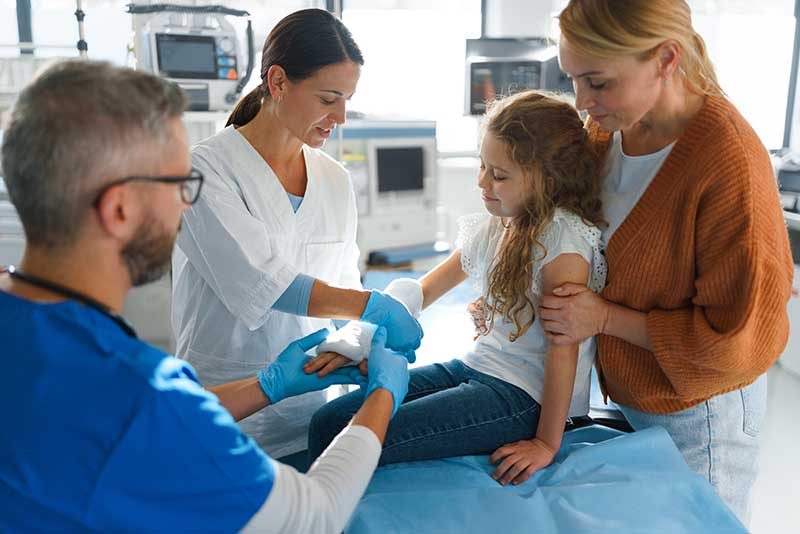Emergency situations involving children can swiftly escalate. Recognizing acute medical conditions and knowing how to respond can save lives. Pediatric emergency care includes the skills and information required to properly manage these critical situations until professional medical help arrives. This blog delves into the critical parts of spotting emergencies, doing first aid and CPR, and determining when to seek emergency care for children.
Recognizing the signs of an emergency
Children may not always be able to express their sadness clearly. It is critical for parents and caregivers to notice the symptoms of a major health problem. These include, but are not limited to, severe breathing difficulties, uncontrolled bleeding, allergic reaction symptoms (such as severe swelling or difficulty breathing), unconsciousness, or any substantial change in behavior or responsiveness. Early detection of these indications can be critical in avoiding further injury.
First Aid Basics
Knowing basic first aid can help you manage a pediatric emergency until medical help comes. Here are some important points:
- Cuts and scrapes: Gently cleanse the area with water and apply pressure with a clean cloth to stop bleeding. Once the bleeding has stopped, apply a bandage.
- Burns: Apply cool (not cold) water to the burn for several minutes. Do not use ice, butter, or cream. Cover lightly with a clean towel or bandage.
- Falls: Do not move the kid if you fear a significant damage to the neck, back, or limbs. Keep them as still as possible while calling for emergency assistance.
CPR for Children
When a child’s breathing or heart stops, cardiopulmonary resuscitation (CPR) can save their life. The process differs slightly from that for adults, with a focus on gentler compressions and avoiding tilting the head back too far between breaths. It is strongly advised that parents and caregivers complete a certified course in pediatric CPR to guarantee they can do this operation correctly when necessary.
When to Seek Emergency Care?
Determining when to head to the emergency room might be difficult. As a general rule, if you are unsure about the seriousness of the condition, it is best to err on the side of caution and seek professional medical help. Suspected poisoning, seizures, trouble breathing, severe allergic responses, and any indications of substantial head trauma are all examples of situations requiring prompt emergency care.
Prepare for emergencies
Preparation can have a huge impact on how a pediatric emergency goes. Keeping a well-stocked first aid kit at home and in your car, knowing where your nearest emergency room is, and having a list of emergency contacts, including the poison control number, can all save you time in an emergency.
While the idea of dealing with a pediatric emergency is intimidating for any parent or caregiver, being prepared can make all the difference. Recognizing the indicators that require quick action, learning basic first aid and CPR, and knowing when to seek professional medical attention are all necessary abilities. Remember, when it comes to children’s health and safety, it is always preferable to be overly careful than to regret inaction. Education and readiness are your most effective weapons for negotiating the unpredictable nature of pediatric emergencies.
